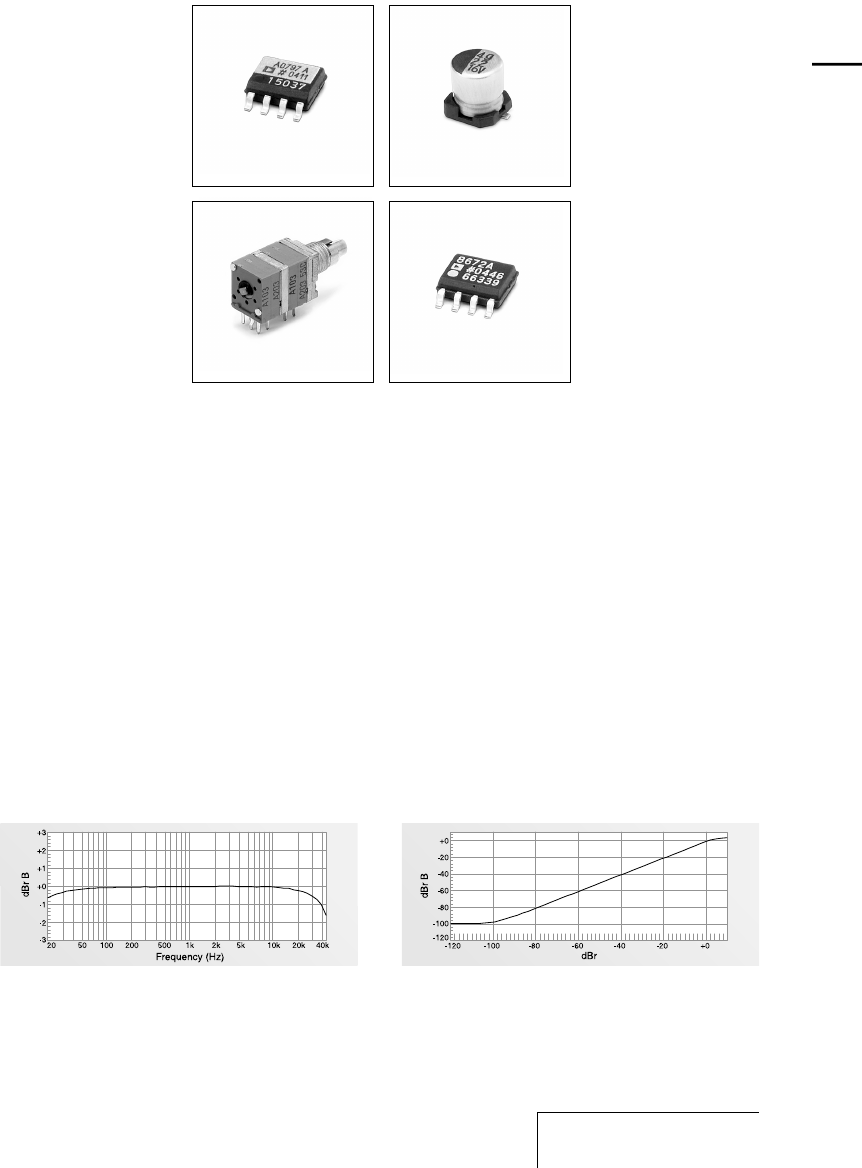
Electrical circuit
—
Amplifies sound
Line amplifier
Sound picked up by the microphones is
amplified in the analog circuit, which
achieves a frequency response that reaches
the high frequencies (Figure 2) and enables
the wide dynamic range of PCM-D1.
The microphone amplifier provided for each
channel is Analog Devices’ AD797, which
boasts ultra-low noise and distortion.
A variable gain circuit is adopted for
amplitude control, thus improving the actual
signal-to-noise ratio.
In the signal line, direct current is removed
by Elna’s coupling condenser, which has a
separator made of synthetic mica mix paper.
A dual-shaft, quad-unit volume control with
ten times the life of a standard volume control
was developed for recording. Special carbon
ink is applied to the resistor in the control to
suppress noise produced by sliding.
Like the microphone amplifier, the line
amplifier, AD8672, is provided by Analog
Devices.
Interference between blocks is prevented by
placing the analog circuit on a different
board from digital circuits and providing
separate ± power. The analog circuit also
achieves superior linearity so that the
recorded sound is output faithfully (Figure 3).
Figure 2: Electrical circuit, frequency response Figure 3: Electrical circuit, linearity
Microphone amplifier Coupling condenser
Dual-shaft, quad-unit
volume
11
Overview
PCM-D1. US. 2-664-971-11(1)


















